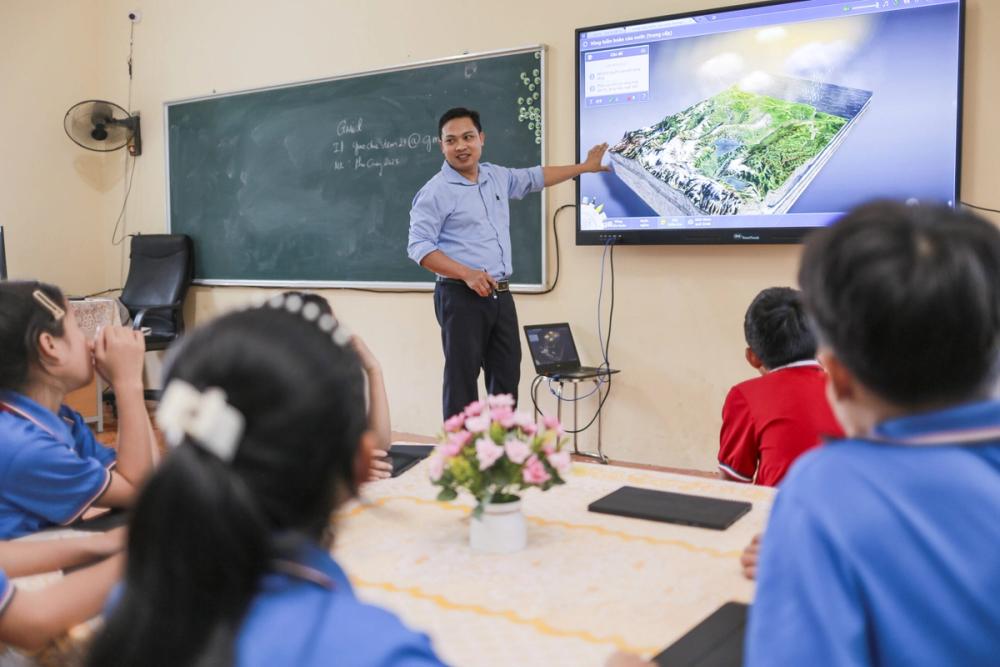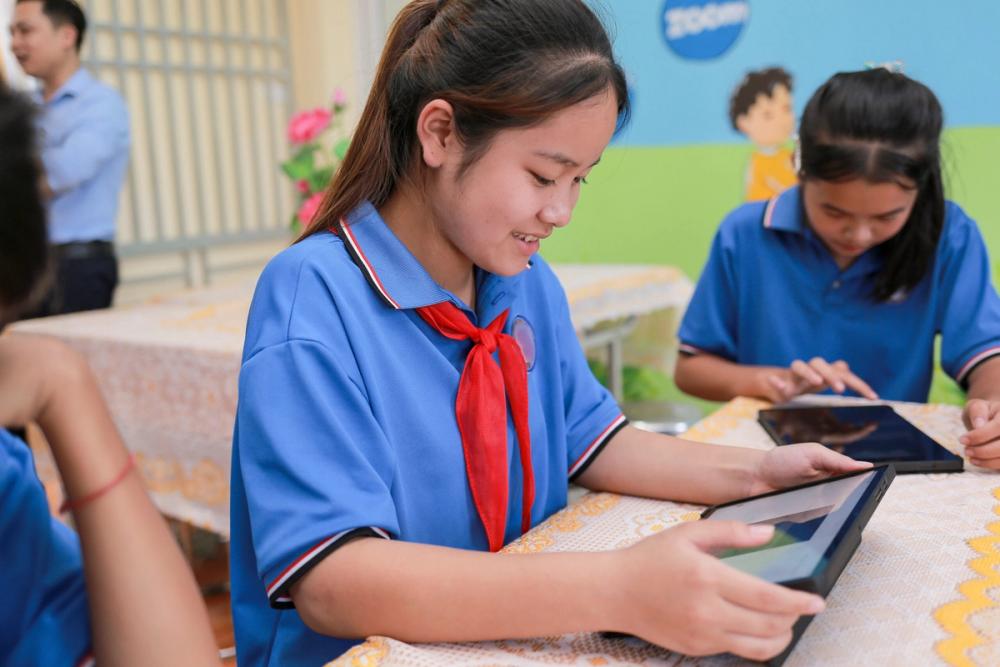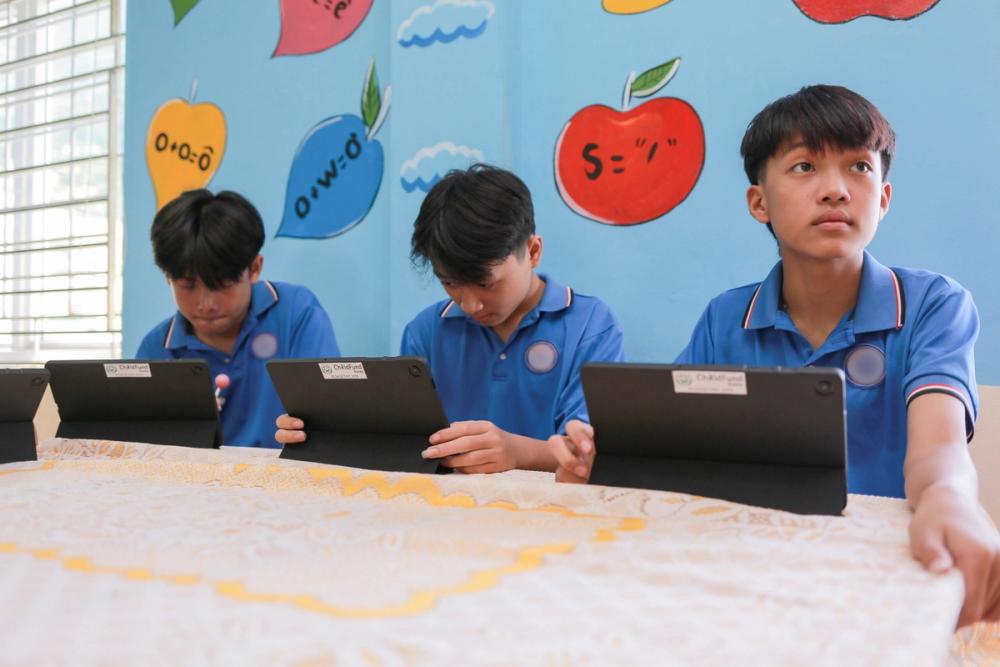How Technology is Changing Education in Vietnam’s Mountain Classrooms
23 December 2024
•By efreedman


In the remote mountains of northern Vietnam, a school serving both primary and secondary students has long struggled with limited resources. In a region where roads are winding, internet connectivity is slow, and access to technology is scarce, education often feels disconnected from the rest of the world. For Ha Van Dung, a geography teacher and head of the school’s STEM (Science, Technology, Engineering and Maths) club, the classroom is full of untapped potential – but it lacks the tools to fully unlock it.
“I want to explore new educational software, but we don’t have the equipment,” Dung shares, adding that with no computers or internet, it’s difficult to make lessons engaging. “I know my students are curious, but without the right tools, their learning feels incomplete.”
This is a reality faced by many rural schools in Vietnam. A 2023 UNESCO report reveals that nearly 50% of rural students in the country lack access to basic educational technology, such as computers and reliable internet. In such conditions, it becomes nearly impossible for these students to keep up with their urban counterparts, where digital tools are seamlessly integrated into the classroom. While urban schools benefit from smart classrooms, high-speed internet and digital learning platforms, many rural schools continue to rely on outdated teaching methods, struggling with a severe digital divide.
However, earlier this year, this school was selected as part of ChildFund Vietnam’s “Empowering Digital Learning for All” project, aimed at bridging this gap and helping students and their teachers engage with modern ways of learning. The school was equipped with a modern digital learning space featuring an interactive screen, a desktop computer, 20 tablets and 3D mapping software, transforming the classroom into a dynamic hub of creativity and exploration. The goal isn’t just to add technology – it’s to open doors that have previously been closed.


"I know my students are curious, but without the right tools, their learning feels incomplete.” – Ha Van Dung
A New Way to Learn
For Dung and his students, the arrival of new technology is a game-changer. Teachers receive training on advanced educational software, such as Mozabook, which uses 3D illustrations to help students visualise complex subjects. With interactive tools now available, students no longer rely solely on static maps and textbooks. These new resources enable them to engage with the subject matter in more dynamic ways, offering a level of interactivity and depth that wasn’t possible before.
For Cai*, a student who had never used a tablet before, the shift has been transformative. “I feel much more interested in classes like these. I’m really proud to have created a video on my own,” she says. Cai’s excitement is shared by her classmates, many of whom have never interacted with digital technology in such a hands-on way. Instead of simply absorbing facts, they are now actively creating, experimenting and exploring.
Minh*, a member of the STEM club, adds, “I’m so happy to participate in these exciting lessons. Using the tablet is something new to me, and I’m always eager and thrilled when I get to show everyone the video I made.”


Learning Beyond the Textbook
This shift from passive to active learning is immediate. Dung’s students are now using digital tools to create their own content, design 3D models and collaborate on projects. They use apps like Quizizz to play learning games, testing their knowledge in real time. The focus is no longer solely on memorising information but on using technology to solve problems, think critically and create. With modern digital equipment, teaching and learning have become much easier. The classroom is now more dynamic, with teaching methods evolving to place students at the centre. Projects are assigned that encourage students to showcase their creativity and develop their skills in new, engaging ways.
"I’m so happy to participate in these exciting lessons. Using the tablet is something new to me, and I’m always eager and thrilled when I get to show everyone the video I made." – Minh
The Digital Divide in Rural Education
The story of this school is not unique. Across Vietnam, rural schools continue to face significant barriers to education, particularly when it comes to digital access. While urban schools are often equipped with smart classrooms, high-speed internet and digital learning platforms, many rural schools still rely on outdated teaching methods and limited resources. Although nine out of ten schools in Vietnam are now connected to the internet, there’s still a noticeable gap between urban and rural areas. In cities like Hanoi and Ho Chi Minh City, students are more likely to find themselves in classrooms equipped with interactive whiteboards, tablets and digital learning tools. Meanwhile, rural schools like this one often contend with slow internet speeds, unreliable connections and a shortage of modern technology. With national targets set to achieve 100% connectivity in schools by 2025 , the journey to closing this digital divide is well underway – but the road ahead remains challenging. At Dung's school, however, the arrival of new technology is already making a tangible difference. Students like Cai and Minh are excited to learn in new ways. With support from ChildFund Vietnam, they are gaining essential digital skills for the future, learning to create multimedia projects, navigate digital platforms and think critically about the information they encounter. As Cai says, “I feel much more interested in classes like these. I’m really proud to have created a video on my own.” For them, these skills go beyond academic success – they are the building blocks for succeeding in an increasingly digital world.


A New Generation of Learners
In the mountains of northern Vietnam, one classroom has evolved into a space of curiosity, creation and exploration. With the support of teachers like Dung, students are building skills for a future that is wide open. As digital tools make their way into more rural classrooms across the country, this school’s story is a powerful reminder of how technology can transform education and create new opportunities. Students like Cai and Minh are ready to seize them.
*Names have been changed to protect individuals' identity.
Learn more about our work in Vietnam.








